The Opportunity Project for Cities is supported by the John S. and James L. Knight Foundation and receives pro bono technical support from Google.org Fellows and Googler volunteers. It is executed jointly by the Centre for Public Impact and The Beeck Center for Social Impact + Innovation at Georgetown University. This report was written by Tahmid Islam, Giselle Cordero, Lily Payton, and Matt Collins. It was released on February 6th, 2025, under a Creative Commons AttributionShareAlike license. It should be cited as: “The Opportunity Project for Cities: Lessons from Akron, Macon-Bibb, Miami-Dade County, Saint Paul and Ramsey County” (2025). Washington, D.C.”
Executive summary
Governments serve residents best when they meaningfully engage their communities. Building solutions in partnership with residents fosters more efficient and effective policy-making and product development. In today’s digital world, local governments increasingly rely on technology to address community challenges. By prioritizing inclusivity, accessibility, and community input, governments can co-create digital solutions that address real needs while fostering transparency and trust with their communities.
The Opportunity Project for Cities (TOPCities or TOPC) program uses effective partnership-building between communities, local governments, and tech experts to build digital solutions to the challenges residents face. Using a human-centered design approach, we developed a five-month innovation program inspired by the federal initiative, The Opportunity Project. The program gathers local governments with community partners (often non-profits) and pro bono technical support from Google.org Fellows and Googler volunteers to create a Minimum Viable Product (MVP) that addresses a local challenge, building innovation and digital capacity. The Knight Foundation provides funding and resources to run the program.
Our objectives for the TOPC program are threefold:
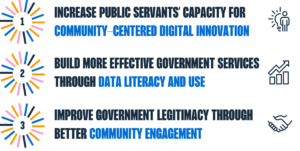
- Since the program began in 2020, TOPC has worked with eight local governments across the US, building digital solutions for issues such as homelessness, housing conditions, and climate change.
- In that time, the program worked closely with 108 public servants and engaged over 1850 residents. All governments participating in the program say they have found it effective to work closely with community partners to build solutions.
In the short term, the program equips local governments to develop digital tools addressing residents’ challenges while introducing a new problem-solving approach. In the long term, it cultivates a culture of collaboration, responsiveness, and transparency, empowering governments to continue co-creating solutions with communities beyond the program’s duration.
In 2024, we completed the fourth and current final cycle of the TOPC program, building on insights from previous years. This year, we implemented significant changes to the program based on participant feedback, including adding a pre-onboarding phase, ensuring intentional buy-in from executive champions, and adopting a more flexible approach to applying the curriculum. For more details on these updates and their impact, scroll down to the Key Lessons section!
This year’s participants include local governments from across the country: the City of Akron, Ohio; Macon-Bibb County, Georgia; Miami-Dade County, Florida; and Saint Paul and Ramsey County, Minnesota. Their projects addressed challenges such as combating the impacts of climate change, streamlining cumbersome business permitting processes, reducing barriers to accessing energy assistance, and tackling workforce development gaps in the green economy.
This report provides a snapshot of key learnings from the 2024 TOPC program, including case studies of each local government’s experience. To learn how to recreate and implement similar initiatives, explore our comprehensive TOPCities Toolkit.
Key Lessons
At TOPC, we always strive to embody the work we teach. A core component of our program is the practice of iteration through user feedback. This year’s program experience was intentionally built on previous iterations, taking key lessons from previous reports and internal evaluations. This section highlights our key changes, providing insight into how these adjustments impacted program outcomes. These changes introduced valuable experimentation, unlocking new ideas and setting the stage for improvement in future iterations.
- Conducting a pre-onboarding phase: Teams often struggled with inadequate resources, especially foundational elements like sufficient data or an idea for a focus area, to conduct the program effectively. This year, we introduced a pre-onboarding phase to evaluate resource gaps and identify where teams needed the most support. Teams were able to address challenges early and better prepare themselves for the program. The results were mixed. Some teams benefited from extra time to brainstorm focus areas and collect necessary data, whereas newer teams still needed additional support as the program continued.
- Intentional buy-in from senior officials: In previous years, limited decision-making power hindered participants from accessing the resources needed to succeed in the program. This year, securing buy-in from senior officials, including mayors, streamlined decision-making, elevated participants’ work, and facilitated product development. Because of this buy-in teams moved faster through the process as decisions were made faster.
- Flexible and adaptable curriculum: Often, participants in the program have varied levels of experience based on their previous participation. To address this, we adapted the curriculum to match each participant’s expertise, allowing for flexibility in learning and pace. This led to mixed results depending on the participant and the program phase. For example, more experienced teams could move quickly through the latter stages of the program, but there was not much more to learn from the curriculum. Although not entirely successful, this change provided us with much-needed insight into questions like ‘Who should participate in the program?’ or ‘How do we engage participants with different levels of expertise?’
To further explore the impact of the TOPC program over its four years of programming, check out our Heart of TOPC article, which provides a comprehensive overview of our achievements and lessons learned.
We’ve also developed in-depth case studies on some of the standout projects from recent years. Dive into the details of Miami-Dade County’s Cool Commute project or discover the innovative work behind Saint Paul and Ramsey County’s Green Jobs initiatives by clicking the links.
Lastly, if you’re interested in a core aspect of the TOPC program—building partnerships with communities and technology organizations—don’t miss our Strength in Collaboration article, which highlights the strategies and benefits of these vital collaborations.
Case studies
Each local government participated in the 5-month-long TOPC program together on the same timeline. The program consisted of 3 phases:

(Learn more about each phase and how to apply the TOPC framework to your work via the TOPC Toolkit).
Although the teaching and tools were the same, each local government experienced the program uniquely. This year, we introduced more flexibility in the curriculum, allowing teams to progress at their own pace based on their experience with TOPC. The case studies section will give you an in-depth look into each local government’s experience with the TOPC program, providing a snapshot of their research process, the prototypes they developed, and a glimpse into what’s to come in the future. Before you dig into the case study please take a look at some jargon definitions below to help you better understand.
User testing– the process through which a product is tested by real users (in the case of TOPC municipal residents) who perform specific tasks in realistic conditions.
Prototype– an earlier version of a product, usually used to be tested and further developed.
MVP– A minimum viable product. A product with its most foundational features in order to validate an idea for a proposed solution.
Impact evaluation– A process to determine the effectiveness of a product.
City of Akron, Ohio: Restoring the Tree Canopy
The City of Akron addressed the significant loss of its tree canopy, which declined significantly between 2011 and 2018 and is projected to decline even further in the decade ahead. This decline is especially impactful to neighborhoods with lower tree canopy coverage, reducing benefits like air pollution removal and shade against heat islands. To tackle this issue, the team developed Canopy Connect, a digital tool to turn tree canopy data into a shared community resource.
Canopy Connect empowers community organizations and residents to restore tree coverage. The tool provides data to guide targeted tree planting in low-canopy areas, enabling organizations like Keep Akron Beautiful to facilitate private property tree planting and monitor progress toward their goal of planting 100,000 trees by 2034.

The team
The City of Akron brought together staff from its Office of Sustainability and Resiliency, Office of Diversity, Equity & Inclusion, Public Works, and IT departments. Keep Akron Beautiful (KAB) supported the team’s efforts as a nonprofit dedicated to environmental stewardship, beautification, and fostering community pride. KAB was vital in facilitating community research and engagement, leveraging its local expertise and trusted relationships to ensure the tool addressed community needs. The team also received support from Google.org Fellows, a pro-bono technical team, and Googler volunteers, which contributed expertise in data analysis and digital tool design to assist with the project. Knight Foundation’s Director for Akron Kyle Kutuchief provided guidance throughout the program.
The research process
To better understand the challenges posed by the declining tree canopy, the team conducted a thorough research process that combined data analysis with community engagement. This mixed-methods approach gathered critical insights from residents and stakeholders. The team analyzed existing data, reports, and statistics to contextualize the scope of the issue and its impact. Partnering with Keep Akron Beautiful, the team distributed surveys at community events, collecting over 500 resident responses. Finally, the team held three in-person focus groups with twelve community members from across Akron’s neighborhoods to dive deeper into the issue.
The research focused on uncovering residents’ awareness of tree canopy issues, barriers to participating in tree-planting efforts, and potential solutions, all aligning with community priorities. The team synthesized insights and co-created actionable solutions.
Research findings
The research identified several key pain points and opportunities:
- A lack of unified messaging, coordinated public outreach, and shared citywide data, with residents needing accessible and clear participation channels.
- Knowledge and resource barriers to tree planting and care, with residents needing easier access to physical tools, instructions, and other practical resources.
- Residents want to see continued partnerships and coordination between the city and other organizations supporting this work.

The prototype
Using research findings and their understanding of the challenge, the team developed Canopy Connect with the support of Google.org. The core features of Canopy Connect are:
- An address-searchable map displaying tree canopy data to identify low-coverage areas and tree-planting potential by parcel.
- Links providing information on Akron Tree Commission, tree planting initiatives, resources, and how residents can participate.
The team will conduct user testing with community members and organizations to refine the tool between January and March 2025.
Product launch and next steps
The team hopes to then launch Canopy Connect, after making adjustments, by May 2025.
After the TOPC program ends, the journey is just beginning for Akron and Canopy Connect. The team plans to take steps to ensure sustainability:
- Refresh and update tree canopy data to reflect updated tree canopy coverage.
- Expand tree planting efforts with local partners to prioritize areas with the lowest canopy coverage, addressing disparities across neighborhoods.
- Implement tools and methods to support and track progress toward Keep Akron Beautiful’s goal of planting 100,000 trees by 2034.

Macon-Bibb County, Georgia Case Study: Creating accessible avenues for business licensing
Macon-Bibb County addressed business licensing and permitting accessibility. To solve this challenge, the team developed a two-pronged solution, 1) redesigning their business licensing website and 2) integrating a Chatbot with 24/7 support.
These two products aim to improve accessibility for new and potential business owners hoping to start a company in Macon-Bibb. The team believes this update to the website will implement a more user-friendly layout with streamlined navigation to enhance usability. For the Chatbot, the product will provide immediate assistance and answers to common questions while being available around the clock for users.
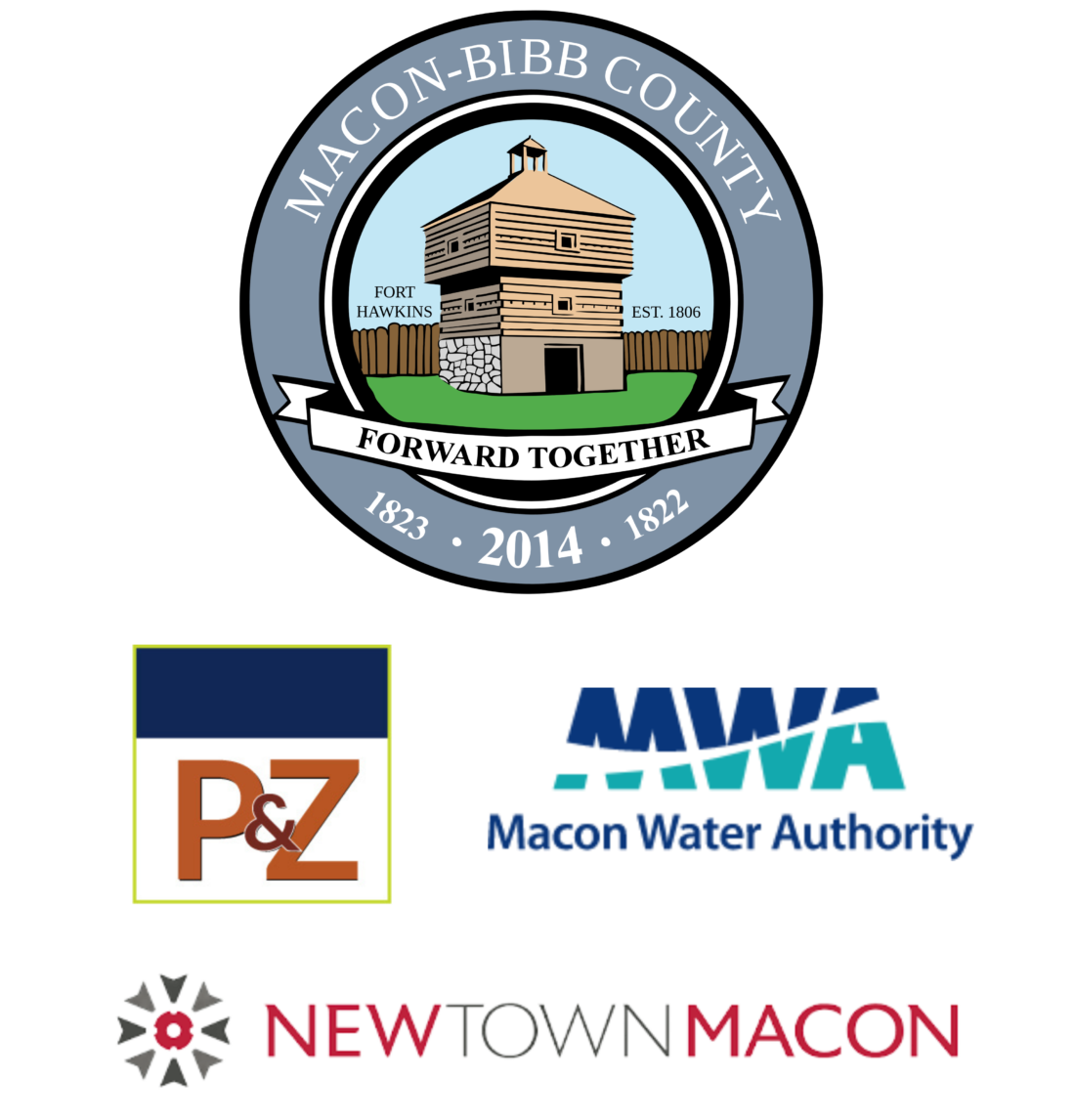
The team
Macon-Bibb County team consisted of staff from IT and Planning & Zoning departments, supported by the Water authority and Building & Fire Safety. NewTown Macon supported the municipal team along with pro bono support from Google.org Fellows and Googler volunteers. NewTown Macon acted as their community partner, providing a deeper insight into the business landscape of downtown Macon-Bibb, and supporting the community research process alongside the County. Knight Foundation’s Director for Macon provided guidance throughout the program.
The research process
The team conducted research to better understand the complexities of business permitting and licensing in the County. The team created a 15-question virtual survey for those currently engaged in or have completed the business permitting process in Macon. They also engaged in an internal focus group to find out challenges from inside the organization. The research wanted to understand the biggest issues in applying for business licenses and the specific departments that made it most difficult.
Research findings
The research identified key pain points and opportunities for creating a solution to address the challenge. Some of the highlights of the research included:
- The most challenging processes were with Planning & Zoning Department, Macon Water Authority, and the Health Department.
- Most business license respondents received a final decision within 6 months.
- 50% reported a negative or neutral experience when applying for a business license.
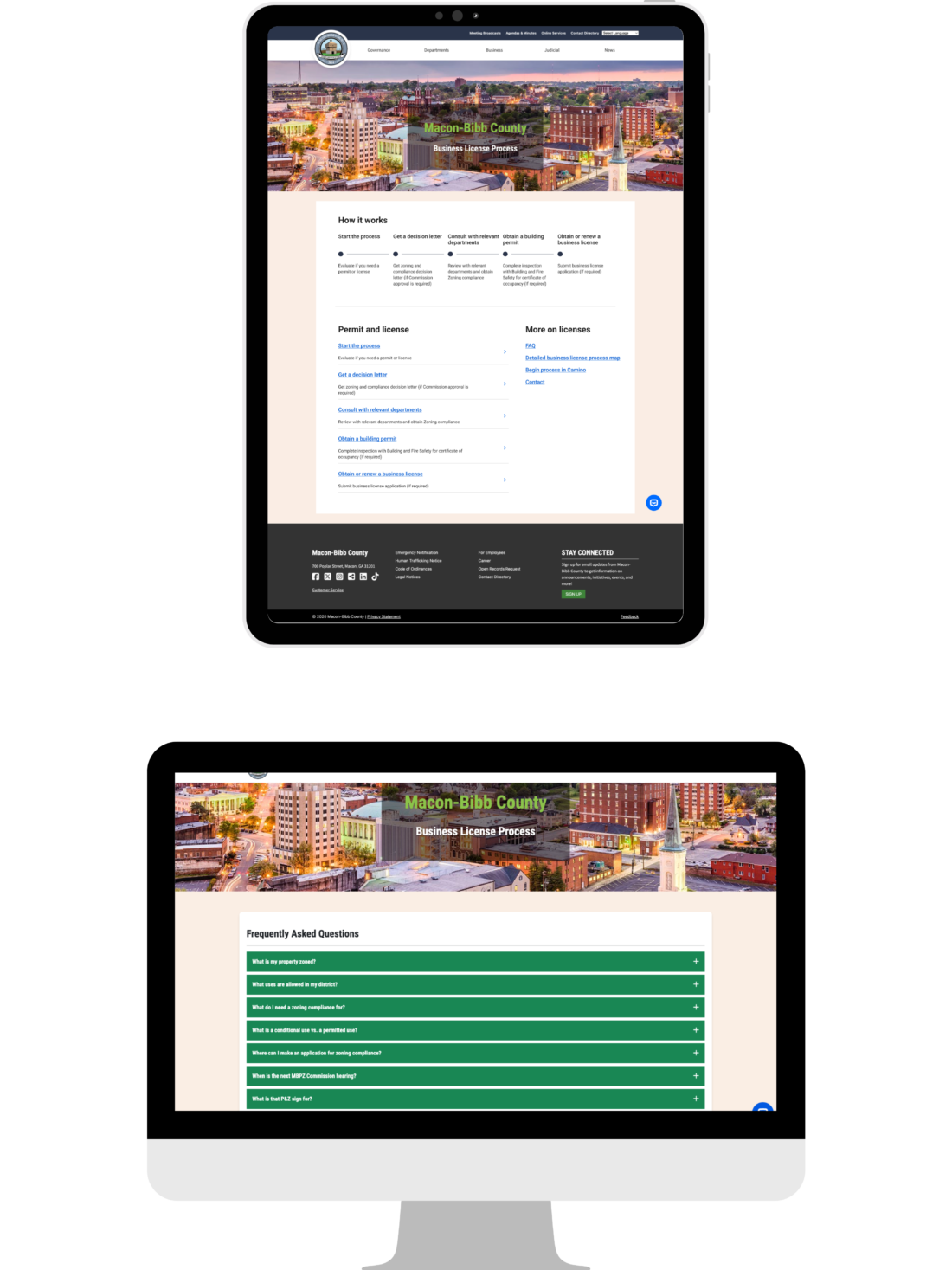
The prototype
Using the research analysis and their initial understanding of the challenge, the team, with the support of Google.org Fellows and Googler volunteers, developed a prototype for both the updated website and the Chatbot. The core features of these tools are:
Website Redesign
- Improved navigation and enhanced readability.
- Clearer information architecture and reduced cognitive load.
Chatbot
- 24/7 access to real-time support.
- The linkability of Chatbot support takes you to the most important pieces of information on the website.
The team plans to conduct user testing in the future, hoping to reconvene focus group participants from the research phase.
The team has yet to conduct user testing but plans to contact previous surveyees soon to further refine the product features.
Product launch and next steps
The team hopes to launch the redesigned website and Chatbot in May 2025.
After the TOPC program ends, it is just the beginning for Macon-Bibb and its new products. They plan to take some significant steps in 2025 to ensure these prototypes turn into sustainable products launched next year. A few next steps the team will be taking are:
- Conducting user testing through an additional survey in order to update the website content based on their feedback.
- Implementing more Chatbot contributions and integrating them across all departments that touch business licensing and permitting.
- An ongoing plan of user testing to ensure updates are made in a timely and relevant manner.

Miami-Dade County, Florida Case Study: Making Energy Assistance More Accessible
Miami-Dade County aimed to make the Low-Income Home Energy Assistance Program (LIHEAP) more accessible to residents across the County. To improve accessibility, the team developed the LIHEAP Application Builder.
The LIHEAP Application Builder is an online tool that allows applicants to check if they have all the necessary documents for a complete LIHEAP application before visiting a resource center in person. This tool is designed to improve the success rate of LIHEAP applications, ease the workload on front-line staff, and build greater trust in both LIHEAP and the Community Action and Human Services Department (CAHSD).
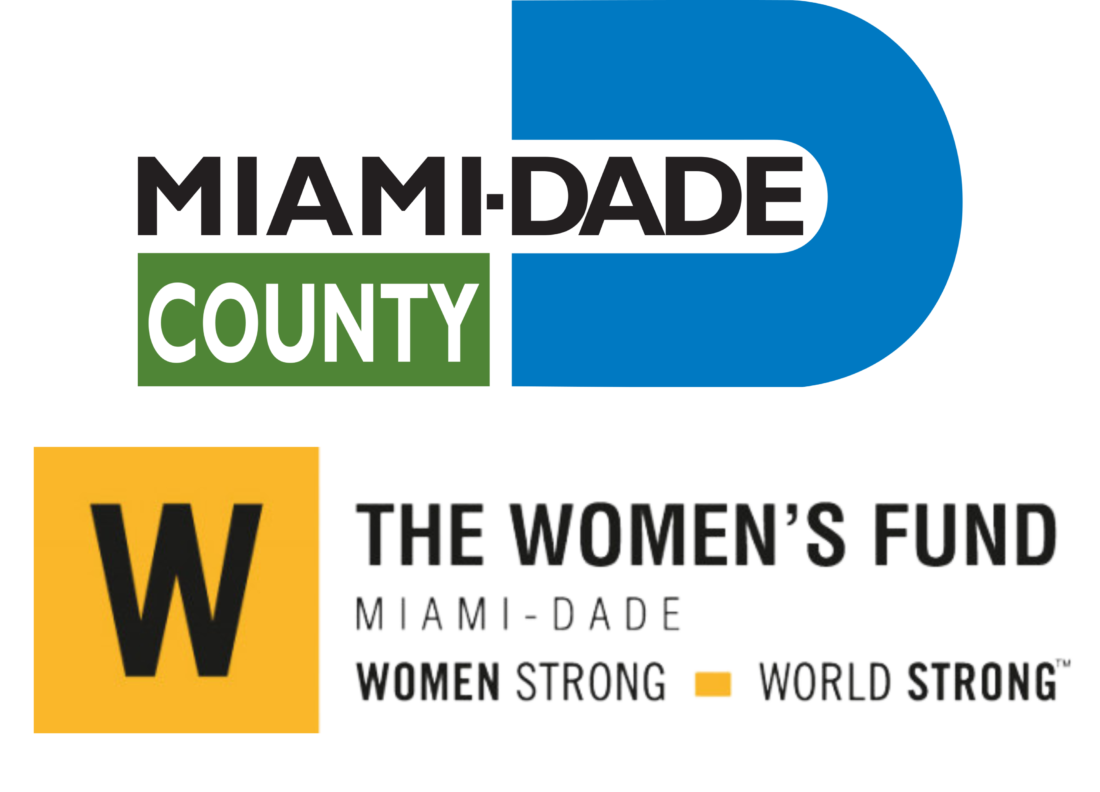
The team
The Miami-Dade County team consisted of staff from the Information Technology Department (ITD) and CAHSD. The Women’s Fund Miami-Dade supported these efforts, bringing expertise in heat mitigation and community engagement. A pro-bono technical team of Google.org Fellows and volunteer Googlers assisted the team to develop the tool.
The research process
The team engaged in internal and external research to better understand the challenges residents face when applying for and receiving LIHEAP. The team conducted interviews with frontline CAHSD employees and in-depth interviews with residents previously receiving LIHEAP assistance to identify key pain points and barriers to applying.
Research findings
The research identified some key pain points and opportunities to create a solution addressing the challenge. Some of the highlights of the research included:
- Many applicants desired digital tools to assist in application submission, particularly with mobile accessibility. The lack of printer access also made it difficult for applicants to print necessary documents for in-person submission.
- Applicants often faced eligibility issues due to discrepancies between their ID and assistance address, resulting in the inability for many to submit a complete application.
- Many LIHEAP applicants were unaware of the program until they received information through their child’s school or other community resources. Overall, awareness of the program was low among residents.
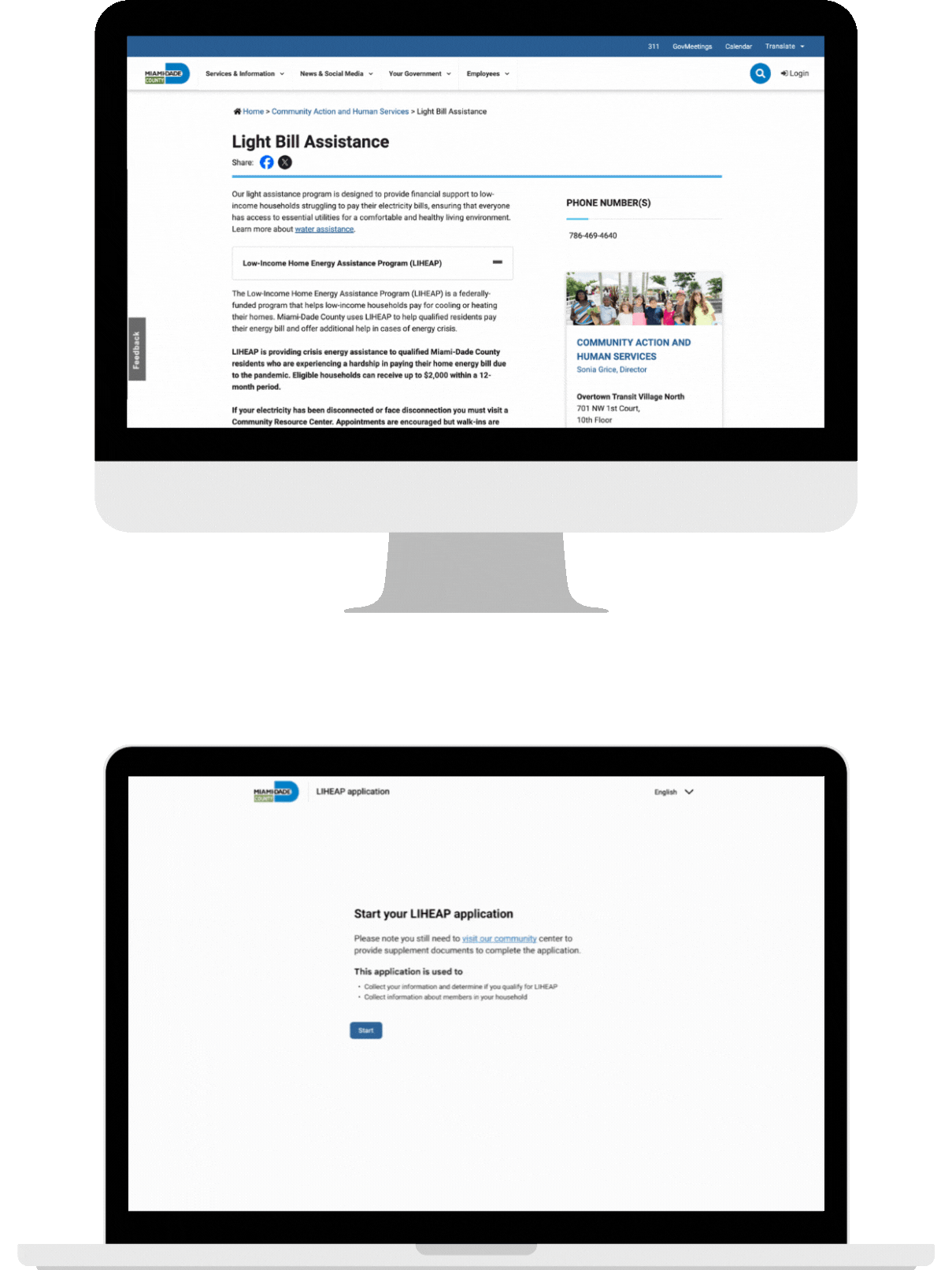
The prototype
Leveraging the research findings, the team, with the support of Google.org, developed a prototype for LIHEAP Application Builder, a tool that helps applicants know whether their documents are appropriately compiled and qualify for LIHEAP. The core features of the tool are:
- Eligibility pre-screening logic helps to know if potential applicants even qualify based on their income, etc.
- ID Extraction assists in ensuring that addresses match up for both one’s ID and their assistance address.
- Document pre-upload/scanning to check if all boxes are filled out properly and correctly. In addition, this helps the applicant easily print the required documents as a package for submission.
The team has yet to conduct user testing but hopes to hold a community gathering with those who attended the research focus group at some point in the future.
Product launch and next steps
The team hopes to launch the LIHEAP Application Builder in 2025.
The conclusion of the TOPC program marks a new beginning for Miami-Dade County and the continued development of the LIHEAP Application Builder. They plan to take some significant steps next year to ensure the prototype turns into a sustainable product, along with additional actions that help complement this product. A few next steps the team will be taking are:
- Completing backend development.
- Conduct user testing with the community.
- Rolling out a fully electronic application system to complement the tool.

Saint Paul and Ramsey County, Minnesota, Increasing wealth through green careers
The city of Saint Paul and Ramsey County aimed to address both the impacts of climate change and historical economic inequities in their communities. To solve this challenge, the team developed a career finder tool that provided local information on careers in the green trades and clean energy sector, which has been in increasing demand both locally and nationally.
This tool aims to provide local job seekers with an insight into careers in the green trades sector in the county. The tool provides job seekers with an in-depth understanding of what each career entails, including the day-to-day work, and critical highlights like average salaries and the training required to do the job. What makes this tool unique, is its connection to local opportunities, including training and education pathways currently available in Ramsey County.
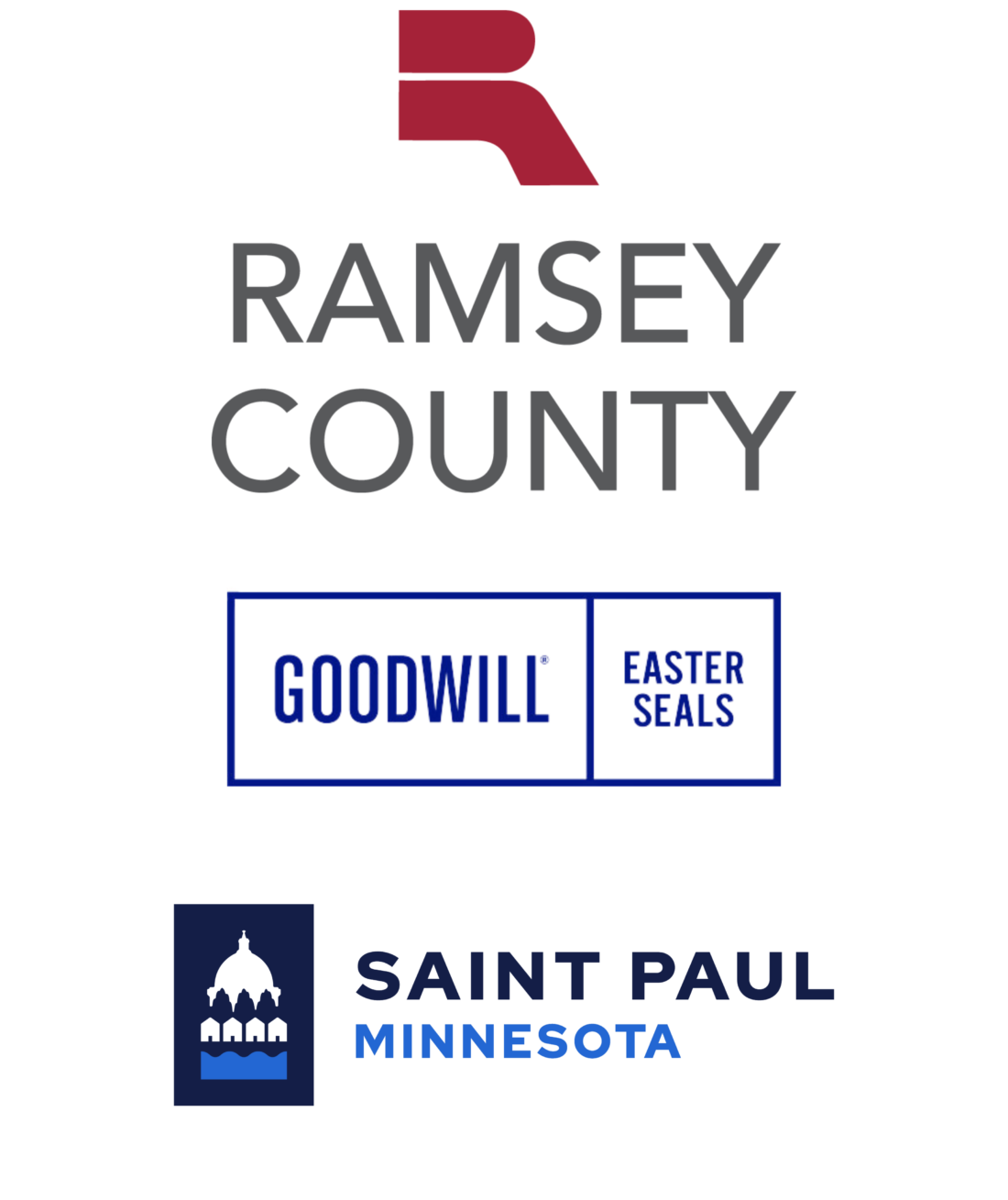
The team
Saint Paul and Ramsey team consisted of representatives from the county’s workforce innovation board including staff from the City’s Climate Action coordination team. Their efforts were supported by Goodwill Easter Seals Minnesota, a pro-bono technical team of Google.org Fellows and Googler volunteers. Goodwill Easter Seals Minnesota acted as the community partner, providing expertise on the lived experiences of job seekers working in and outside the trade and construction industry and supporting the community research process alongside the City and County.
The research process
To better understand the challenge of historical economic inequities in the face of growing demand for green trade jobs that address climate change, the team participated in a community research process. The findings of this research directly influenced the recommendations and design of the tool that was ultimately designed. The team surveyed employers in the industry and hosted focus groups with job seekers. The focus group participants were paid for their time, utilizing funds from Ramsey County.
Research Findings
This research identified some key pain points and opportunities for creating a solution to address the challenge. Some of the highlights of the research included:
- Many job seekers were unaware of green trade opportunities unless they had personal connections in the industry.
- Employers identified that many job seekers were unaware of specific physical demands required by certain green trade jobs.
- Residents expressed concern about climate change but did not see a clear link between their careers and potential positive solutions to the climate crisis.
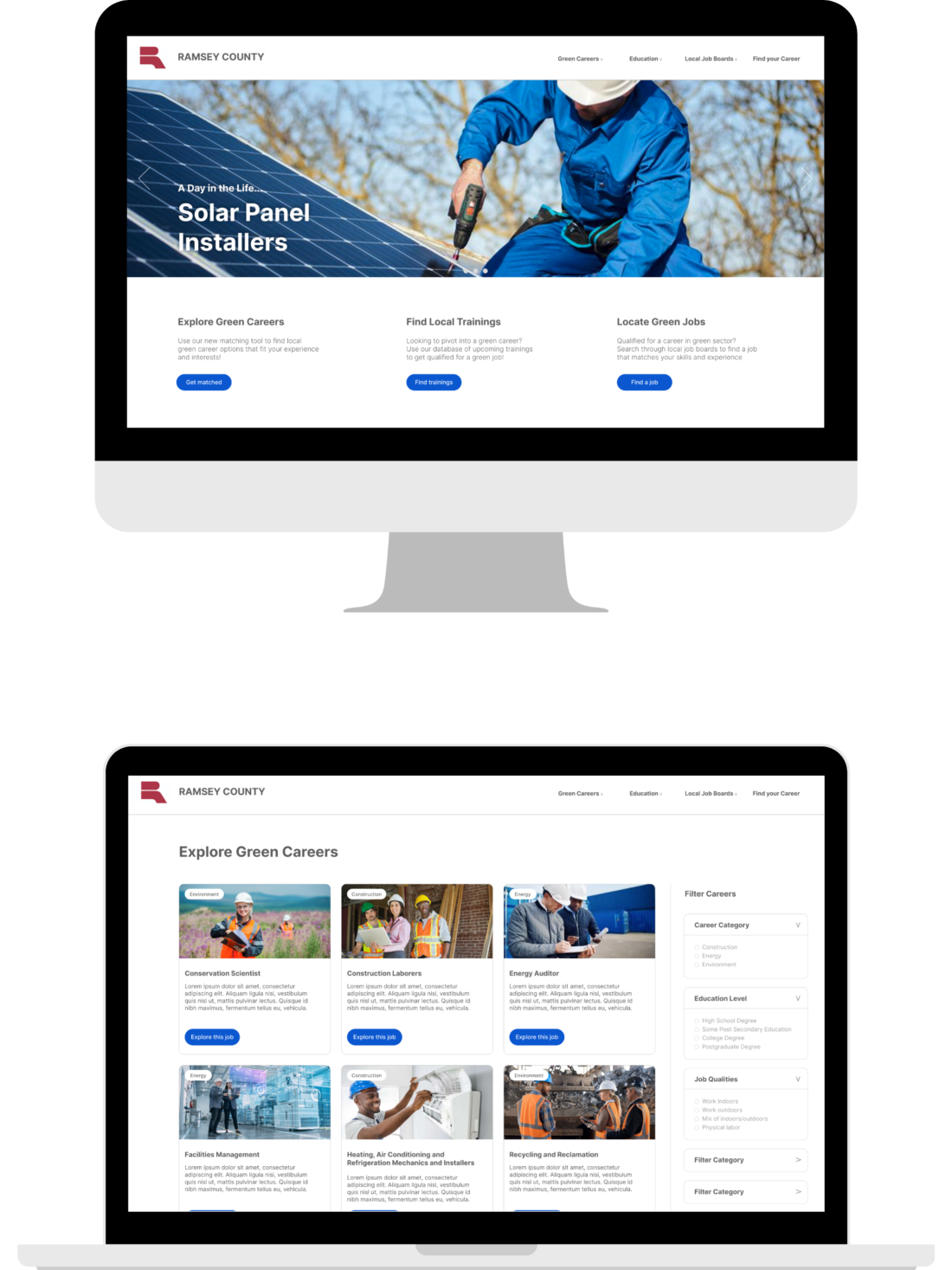
The prototype
Using the research analysis and their initial understanding of the challenge, the team, with the support of google.org, developed a prototype for a career finder tool that offers detailed insight into attaining green trade careers. Career Finder Tool’s core features are:
- Career exploration pages for each job that include core highlights fundamental to understanding what the work entails.
- A questionnaire on the landing page, as well as a filter function that residents can filter based on preference of experience, pay, and core job features.
- Each career exploration page contains a live feed of available local training opportunities specific to that job.
The team has yet to conduct user testing but hopes to hold a community gathering with those who attended the research focus group at some point in the future.
Next steps
The team hopes to launch the career finder tool next year.
After the TOPC program ends, it is just the beginning for Saint Paul and Ramsey County and the career finder tool. They plan to take some significant steps next year to ensure the prototype turns into a sustainable product launched next year. A few next steps the team will be taking are:
- Securing funding to develop the career finder tool further, ensuring its long-term sustainability and usability.
- Building relationships with new employers to gather endorsements for the tool.
- Strengthening the work of Ramsey County’s Workforce Innovation Board by building more coalitions with employers and job seekers.

Conclusion
The fourth and current final cycle of the TOPC program highlights the transformative potential of data, civic technology, and human-centered design in tackling complex local challenges. This year’s cohort, spanning Akron, OH, Macon-Bibb, GA, Miami-Dade, FL, and St. Paul and Ramsey County, MN, has shown how local governments can collaborate with community organizations and technologists to co-create resident-centered solutions.
This report captures the innovative tools developed and the collaborative processes that enabled their creation. It emphasizes the importance of resident engagement, iterative design, and local ownership in driving change. While this cycle of the TOPC program concludes, its impact is just beginning. We hope that TOPC continues provide culture shifts in the ways local governments approach solving challenges. The principles, frameworks, and learnings shared throughout the program are available in the TOPC Toolkit, a resource designed to support municipalities in driving public impact through innovation.
We hope this report and our additional resources inspire you to imagine what’s possible when governments, technologists, and communities collaborate to innovate for the public good. Thank you for joining us on this journey; we can’t wait to see what you build next.
“Knight Foundation is proud to support The Opportunity Project for Cities. Over a dozen teams from Knight cities across the country have paved the way for how technology and data alongside responsible resident engagement – can directly improve community outcomes like climate resilience, mobility experience, business permitting, and intermunicipal local services.” – Kelly Jin, Chief of Staff and VP/Communities
Acknowledgements
This work was made possible with the support of dozens of people who are all passionate about the power of open-data technology, civic innovation, and cross-sector collaboration. The Centre for Public Impact and Beeck Center for Social Impact + Innovation at Georgetown University is grateful for all the energy, insight, and care our TOPC participants brought to this work. The program, in particular, could not have been completed without the partnership of Knight Foundation, which provided resources, leadership, and guidance. We are incredibly grateful
for the Knight Foundation’s support in ensuring the success of the TOPC program. TOPC would not have been possible without the participation and support of the following individuals:
Our program teams:
Akron, OH
City Government–
- Britt Zaehringer
- Casey Shevlin
- Darren Rozenek
- Jon Malish
- Esther Thomas
- Brandon Mickle
- Alex Bryan
Community partner: Keep Akron Beautiful
- Emma Segedy
- Jacqui Ricchiuti
Google.org volunteers:
- Varnikaa Gupta
- Neda Perwez
- Shea McManus
- Jess Chen
- Carmen Perkins
- Aditya Bhimireddy
- Austin Zhang
- Karen Zeng
Macon-Bibb, GA
City Government–
- Dr. Keith Moffett
- Barbara Marlin
- Kai Fan
- Denise Mercer
- Megan Flowers
Community partner: Newtown Macon
- Erin Keller
Google.org volunteers-
- Nikhil Prem
- Pritesh Jani
- Mike Kwiatkowski
- Tian Deng
- Isaac Attuah
- Parisha Reddy
- Samir Sharma
Miami-Dade County, FL
County government-
- Jorge Valens
- Ana Chammas
- Syed Abbas
- Tiffany Crapp
- Crystal Lean-Retana
- Letah Parrish
- Eileen Hernandez
- Javier Ruiz
- Kevin Cua
Community partner: The Women’s Fund
- Marya Meyer
- Daniella Luna
Google.org volunteers-
- Jordan Mess
- Shea McManus
- Tian Deng
- Mika Yukimura
- Anthony Lees
- Carmen Perkins
- Ajay Prabhakar
- Joon B.
City of Saint Paul and Ramsey County, MN
City government –
- Russ Stark
- Liz Boyer
County government-
- Ling Becker
- Rachael Molenaar
- John O’Phelan
Community partner: Goodwill Easter-Seals Minnesota
- Sheila Olsen
- Cassandra Avery
- Becky Brink
Google.org volunteers-
- Sarah Stefaniu
- Noureen Nanjee
- Aidai Zipp
- Sanyam Chaudhary
- Shivasankari Kannan
- Juanda Garrido Rojas
Our program partners:
- Jon Belgard
- Kelly Jin
- Kyle Kutuchief
- Marta Viciedo
- Lynn Murphey
- Erin Hattersley
- Luke Bolton
- Libona Kebede
- Roger Fleig
- Gabriel Doss
The Beeck Center for Social Impact + Innovation at Georgetown University
- Harold Moore
- Elham Ali
- Jupleen Kaur
- Jessica Yabsley
- Ashleigh Fryer
- Gerard Ramos
- Giselle Cordero
- Susan Nguyen
- Tahmid Islam
- Matt Collins
- Lily Payton
- Elysa Neumann
- Carmella Grace De Guzman
- Victoria Gomes
- Pierre Berastain



